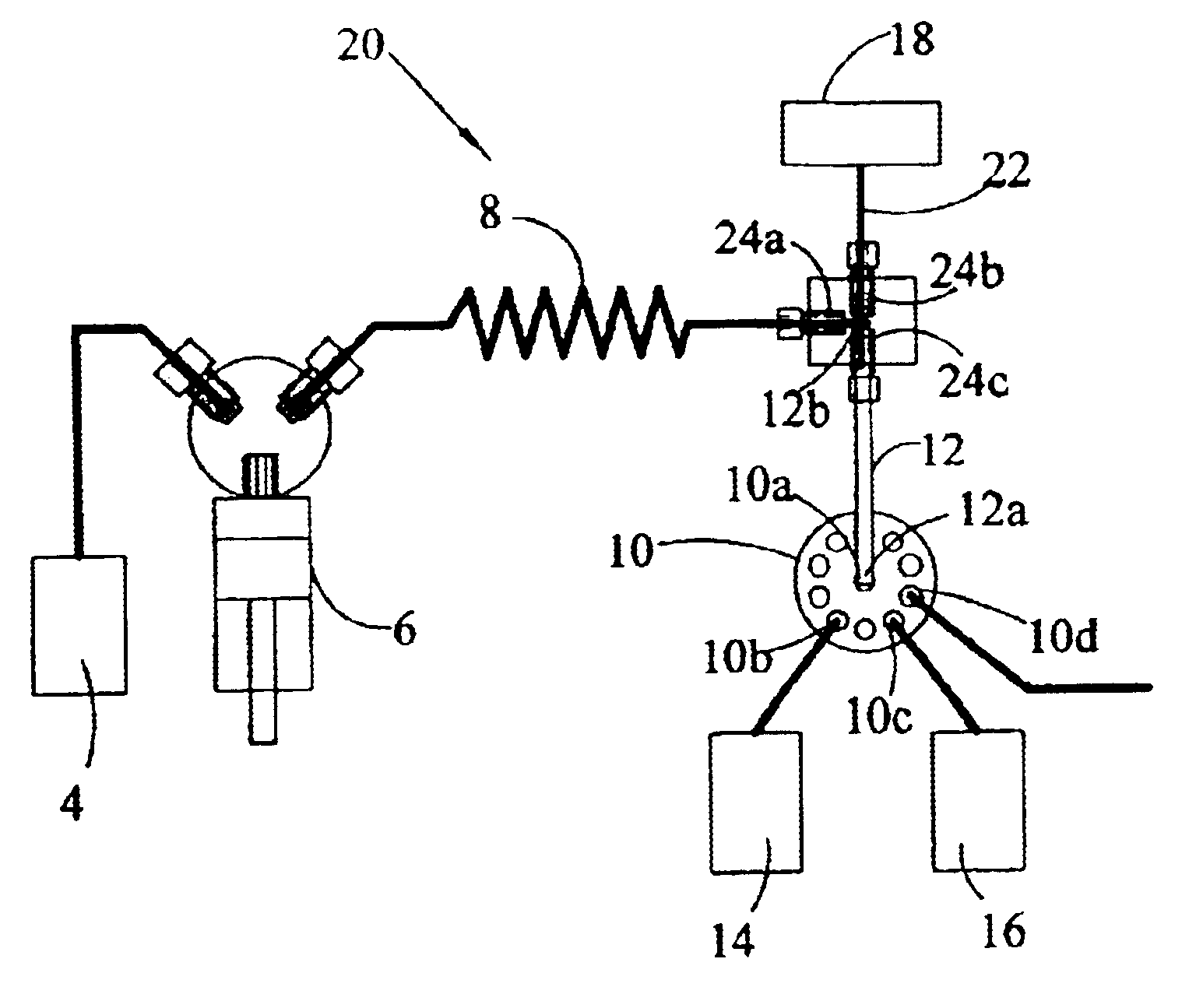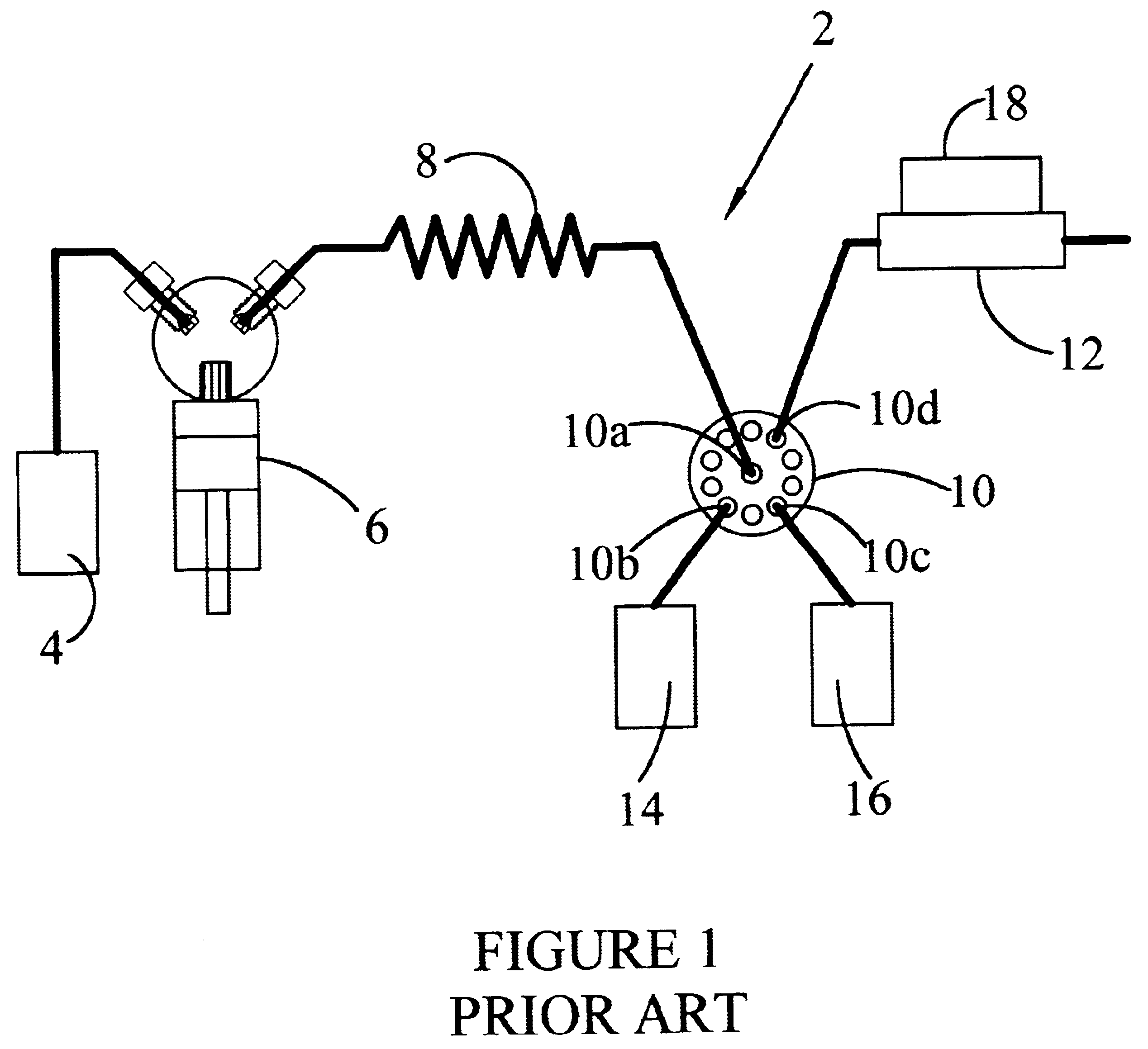Automated chemiluminescence analyzer
a chemiluminescence analyzer and automatic technology, applied in the field of instrumental chemiluminescence analysis, can solve the problems of sia in its conventional prior-art configuration disadvantage, and achieve the effect of increasing the collection of ligh
- Summary
- Abstract
- Description
- Claims
- Application Information
AI Technical Summary
Benefits of technology
Problems solved by technology
Method used
Image
Examples
Embodiment Construction
The sample 14 was a water solution of 2.61.times.10.sup.-10 molar (M) adenosine triphosphate (ATP). The reagent 16 was Enliten.RTM., a registered trademark of Promega Corporation, a mixture of luciferin and luciferase (L / L) in buffer with stabilizers, purchased from Promega Corp., 2800 Woods Hollow Road, Madison, Wis. 57711. The ATP L / L reaction is a well-known chemiluminescence reaction that is used in a number of different analytical applications. The cell 12 was an LCW cell made of an amorphous fluoropolymer which is a copolymer of tetrafluoroethylene and perfluoro-2,2-dimethyl-1,3-dioxane, marketed under the registered trademark TEFLON AF.RTM. by E. I. Dupont de Nemours, a corporation of Wilmington, Del. The cell 12 had an internal diameter (ID) of seven one-hundredths of an inch (in), and a length of eight centimeters (cm). The detector 18 was a photomultiplier tube (PMT). A thin frit having a pore size of from about ten to about twenty microns was placed at the first end 12a o...
PUM
| Property | Measurement | Unit |
|---|---|---|
| length | aaaaa | aaaaa |
| pore size | aaaaa | aaaaa |
| chemiluminescence analyzer | aaaaa | aaaaa |
Abstract
Description
Claims
Application Information
 Login to View More
Login to View More - R&D
- Intellectual Property
- Life Sciences
- Materials
- Tech Scout
- Unparalleled Data Quality
- Higher Quality Content
- 60% Fewer Hallucinations
Browse by: Latest US Patents, China's latest patents, Technical Efficacy Thesaurus, Application Domain, Technology Topic, Popular Technical Reports.
© 2025 PatSnap. All rights reserved.Legal|Privacy policy|Modern Slavery Act Transparency Statement|Sitemap|About US| Contact US: help@patsnap.com



